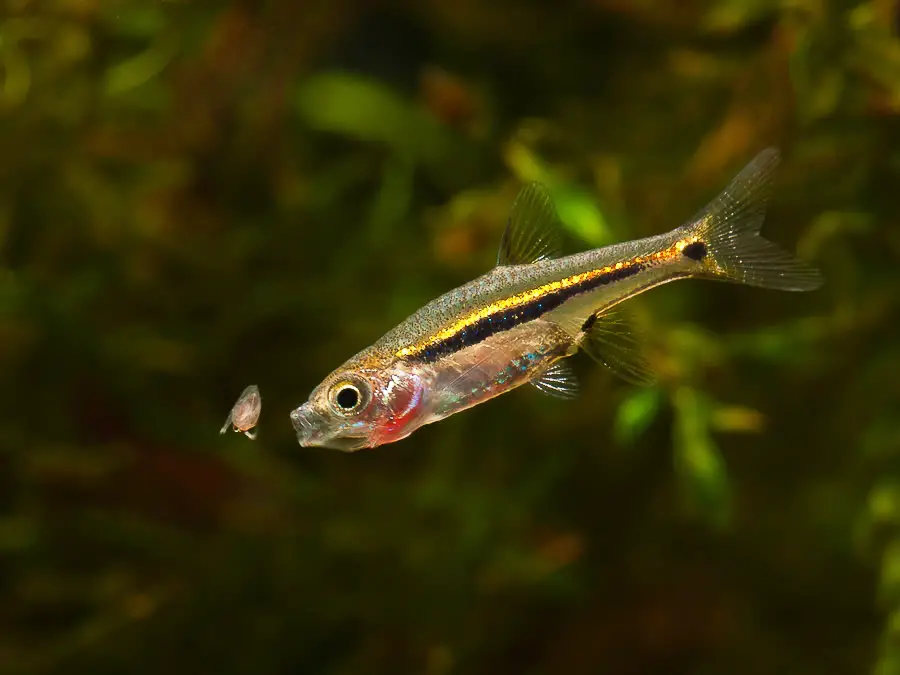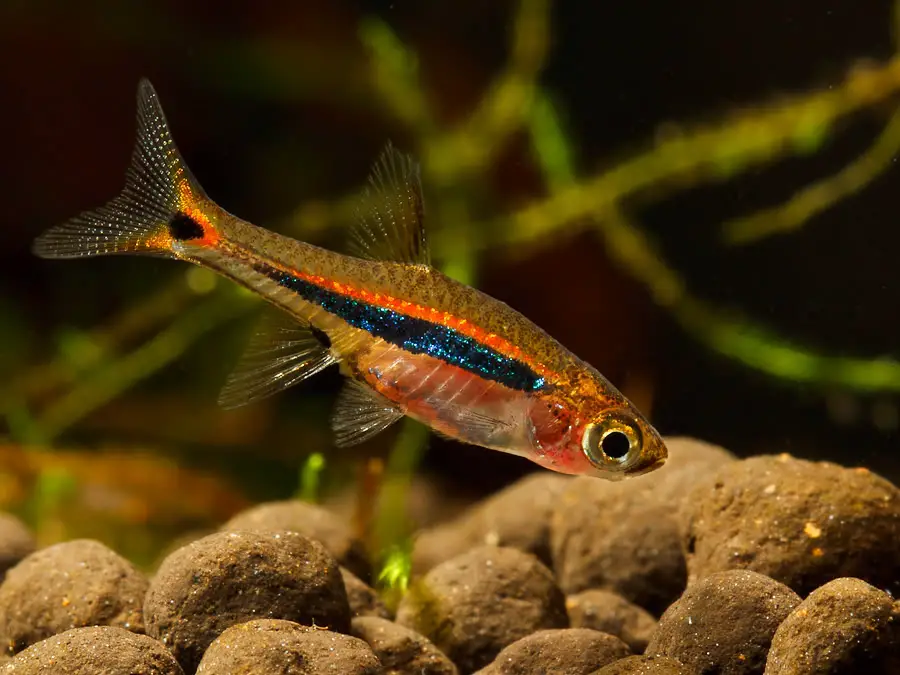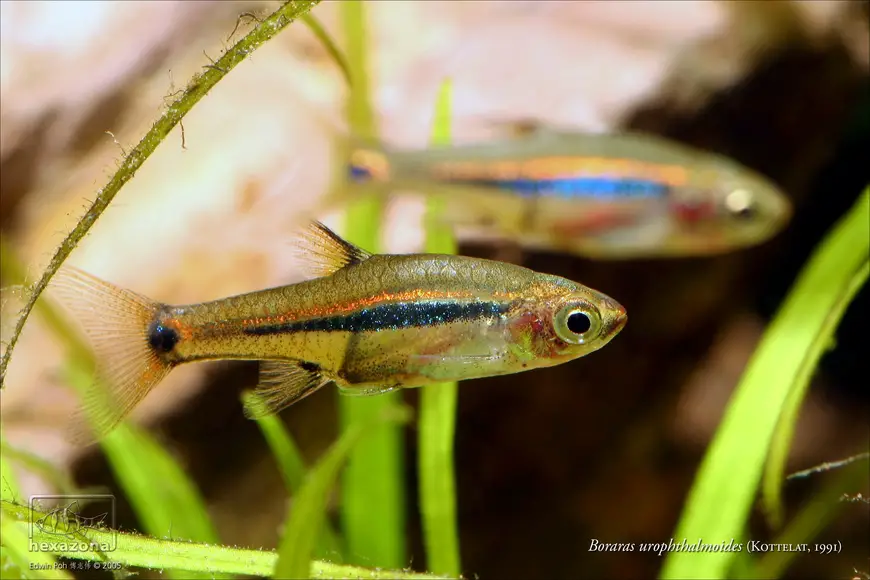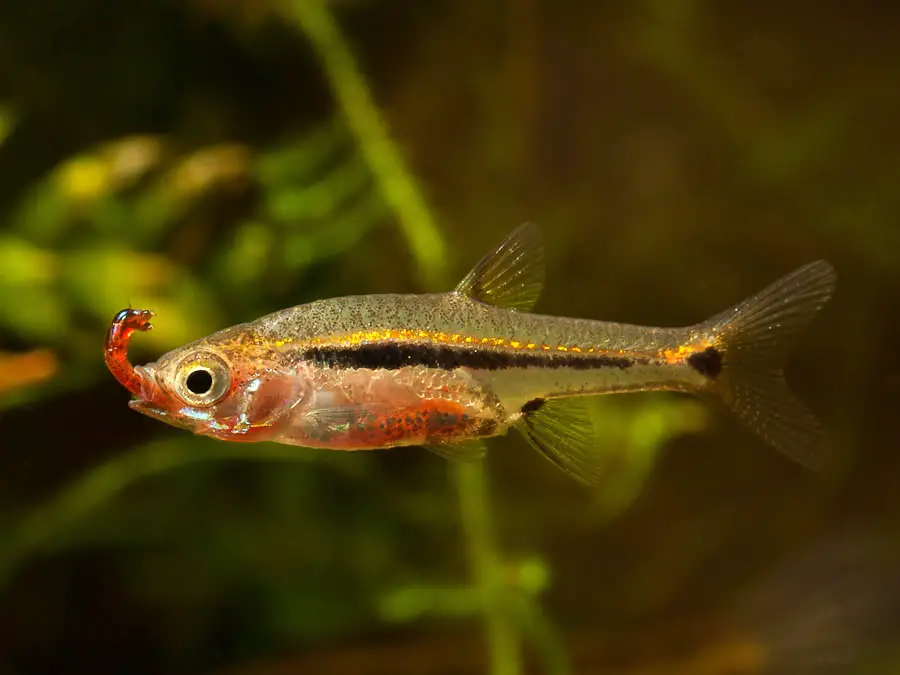Boraras Uropthalmoides
Boraras uropthalmoides, also known as Rasbora uropthalmoides, is a small, colorful freshwater fish that is popular in the aquarium hobby. Their vibrant colors and playful personalities make them a favorite among fish enthusiasts around the world.
Pain Points
While boraras uropthalmoides are generally easy to care for, they can be sensitive to changes in water parameters. Owners of this fish can sometimes struggle to maintain the right balance of pH, temperature, and other key factors, which can lead to stress, illness, and even death in some cases. Additionally, because these fish are naturally timid and shy, they can become easily stressed when introduced to new environments or housed with aggressive tankmates.
Target of Boraras Uropthalmoides
If you're looking for a colorful, active fish to add to your aquarium, then boraras uropthalmoides might be a good choice for you. These fish are relatively easy to care for and can thrive in a wide range of water conditions, making them a good option for both beginners and experienced aquarists. In addition, their small size and peaceful nature make them a great choice for small tanks or community aquariums.
Summary of Main Points
Boraras uropthalmoides is a popular freshwater fish that can add color and life to your aquarium. While they can be sensitive to water conditions and shy around aggressive tankmates, they are generally easy to care for and can be a great choice for both beginners and experienced aquarists.
Personal Experience with Boraras Uropthalmoides
I first discovered boraras uropthalmoides while browsing my local fish store, and I was immediately drawn to their vibrant colors and playful personalities. After doing some research online and talking with other aquarium enthusiasts, I decided to add a group of these fish to my tank. They have been a great addition to my aquarium, adding bright pops of color and energy to the environment. However, I have had to be careful when introducing them to new tankmates, as they can be easily stressed and overwhelmed.

Feeding and Care of Boraras Uropthalmoides
When it comes to feeding your boraras uropthalmoides, it's important to provide a varied diet that includes both dry and frozen foods. These fish are omnivorous and will eat just about anything you give them, so be sure to offer a mix of proteins and vegetables. In terms of care, make sure to monitor water conditions regularly and do partial water changes to maintain a healthy environment. Additionally, be sure to provide plenty of hiding spots and plants for your fish to feel secure.

Behavior and Habitat of Boraras Uropthalmoides
Boraras uropthalmoides are typically found in the slow-moving streams and rice paddies of Southeast Asia. They are a shoaling fish and prefer to be kept in groups of six or more, as this helps reduce stress and encourages natural behaviors. These fish are active during the day and will spend much of their time exploring their environment, playing with tankmates, and looking for food.
Reproduction of Boraras Uropthalmoides
While breeding boraras uropthalmoides can be challenging, it is possible to raise a healthy brood with patience and careful attention to water conditions. These fish are egg layers and will typically spawn in a planted tank with plenty of hiding spots and low lighting. After spawning, the eggs will hatch in 24-36 hours, and the fry can be fed a diet of small, live foods.

Question and Answer Section
Q. Are boraras uropthalmoides easy to care for?
A. Yes, these fish are generally easy to care for and can thrive in a wide range of water conditions. However, they can be sensitive to changes in water parameters and should be monitored closely to avoid stress and illness.
Q. What should I feed my boraras uropthalmoides?
A. These fish are omnivorous and will eat both dry and frozen foods. Offer a mix of proteins and vegetables, and be sure to provide small, frequent feedings throughout the day.
Q. Can boraras uropthalmoides be housed with other fish?
A. Yes, these fish are peaceful and can be housed with other small, non-aggressive fish. However, avoid keeping them with large or aggressive species that might stress or harm them.
Q. How many boraras uropthalmoides should I keep in my tank?
A. These fish are shoaling and prefer to be kept in groups of six or more. A larger group will make them feel more secure and encourage natural behaviors.
Conclusion
Boraras uropthalmoides is a colorful and playful freshwater fish that can be a great addition to your aquarium. While they can be sensitive to water conditions and shy around aggressive tankmates, they are generally easy to care for and can thrive in a variety of environments. If you're looking for a lively and eye-catching fish for your tank, then consider adding a group of these small but mighty fish today.
Gallery
Boraras Urophthalmoides (Rasbora Urophthalmoides) — Seriously Fish

Photo Credit by: bing.com / rasbora boraras point exclamation fish freshwater species water seriouslyfish
Boraras Urophthalmoides (Rasbora Urophthalmoides) — Seriously Fish

Photo Credit by: bing.com / boraras rasbora fish aquarium visit
Boraras Urophthalmoides (Rasbora Urophthalmoides) — Seriously Fish

Photo Credit by: bing.com / boraras rasbora species seriouslyfish
Boraras Urophthalmoides (Rasbora Urophthalmoides) — Seriously Fish

Photo Credit by: bing.com / boraras fish seriouslyfish species aquarium rasbora freshwater tropical enjoys foods live small
Boraras Urophthalmoides (Rasbora Urophthalmoides) — Seriously Fish

Photo Credit by: bing.com / rasbora boraras least fish nano aquarium spec small specimen trade male sparrow peter point aquariums exclamation fluval iii options maguire
